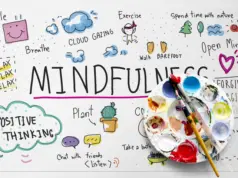The 90-second rule teaches us to pause and mindfully experience our emotions instead of being controlled by them. Emotions naturally pass if we don’t fuel them with thoughts. By observing the feeling without judgment and letting it flow, we can respond calmly rather than react emotionally. Over time, this practice helps us become more emotionally intelligent and mindful in our everyday interactions.
The 90-second rule is a mindfulness technique that helps you manage emotional reactions consciously. It’s based on the idea that emotions like anger, fear, or sadness naturally pass through the body in about 90 seconds—unless we choose to hang on to them through mental repetition. Understanding and applying this rule can transform how you respond to emotional triggers.
Recognize the Emotional Trigger
The first step is awareness. An emotional trigger can be anything—a comment, a look, or a situation—that causes a strong internal reaction. Recognizing that you’re feeling something is key. Instead of immediately reacting, pause and acknowledge the emotion that is rising.
Pause and Observe Without Judging
Rather than reacting instantly, take a moment to pause. Notice what’s happening inside you. Where do you feel the emotion in your body? Is your heart racing, are your fists clenched, or is your stomach tight? This simple act of observation breaks the automatic pattern of reacting impulsively.
Let the Emotion Flow Through
Now allow the emotion to move through you. Don’t try to suppress it or act on it. Simply sit with it. You might even time yourself—90 seconds. Breathe slowly and steadily. Emotions come in waves, and if you don’t feed them with more thoughts, they subside naturally.
Avoid Fueling the Fire
Our minds often make emotions last much longer than they need to. We replay what happened, imagine worst-case scenarios, or assign blame. This mental rehashing keeps the emotional reaction alive. The key to the 90-second rule is to resist this urge to relive or retell the story in your head.
Respond, Don’t React
Once the emotion has settled, you’re in a clearer state to respond. You’re no longer acting out of a burst of emotion but from a place of mindfulness. This leads to better decisions, more thoughtful communication, and fewer regrets.
Practice Builds Skill
Like any habit, learning to apply the 90-second rule takes practice. At first, you might still react too quickly. That’s okay. The more you become aware of your emotions and the space between trigger and response, the easier it becomes to manage them effectively.
Benefits of the Practice
By using this rule, you develop emotional resilience. You’re no longer controlled by sudden emotional impulses. It improves relationships, strengthens your self-awareness, and helps you stay centered even during stressful times.












































